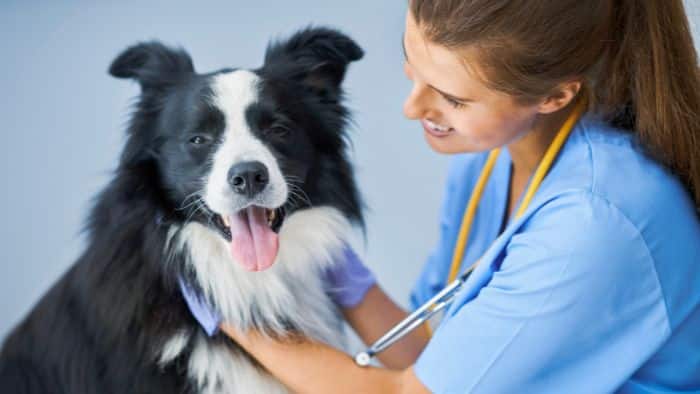What Happens During Dog Routine Physical Exams?

Routine examinations are mainly to understand the basic condition of the dog, including checking facial features and the inside of the mouth, fur health, skin health, heart rate, blood pressure, respiration, body temperature, etc. Looking for diseases that are difficult to detect in their early stages (such as cancer and parasites). Routine exams for dogs are very similar to routine exams for humans. They are all based on seeing, smelling, asking, and checking for abnormalities, appearance, and normality. Dogs of any age need to have this exam.
- Blood test: Mainly a routine blood test, which can detect whether the values of various cells in the blood are normal. Complete blood count (CBC) (ratio of red blood cells to white blood cells, used to determine the presence of anemia, bacterial, viral, parasitic infections, etc.). Blood biochemical tests (used to determine whether there are functional abnormalities in the liver, kidneys, pancreas, and other internal organs in the body, as well as abnormalities in blood ions, blood sugar, total blood lipids, protein, etc.)
- Fecal examination: Mainly determines whether the dog suffers from digestive tract flora imbalance, parasitic infection, digestive tract disorder, and other diseases. It can be properly checked if the dog eats normally and has no indigestion.
- X-ray examination: The condition of the dog’s internal organs and bones can be checked through an imaging examination.
- Ultrasound examination: Check whether there are morphological changes and functional abnormalities in internal organs from an imaging perspective, such as whether the closure of the heart valves is normal and whether the density and size of the liver, kidneys, and spleen are normal. Whether the abdominal cavity and other organs are normal, whether the intestines are normal, whether there are foreign bodies, the thickness and fullness of the bladder, whether there are stones, etc.
- Urine examination: It is mainly used to promptly determine whether there are infections, stones, poisoning, etc., in the dog’s urinary system. This product can perform bladder punctures and extract urine for urine tests when the dog undergoes a B-ultrasound examination.
- Complete Blood Count (CBC): Since puppies are more susceptible to parasite problems, immune deficiencies, and respiratory and digestive tract infections, a blood test can detect anemia or bacterial infections.
- Check for common infectious diseases: Viral infectious diseases are fatal to puppies. If you are starting to own a dog, it is recommended that you get a rapid test for infectious diseases. Common canine infectious diseases include canine distemper, parvovirus, etc.
